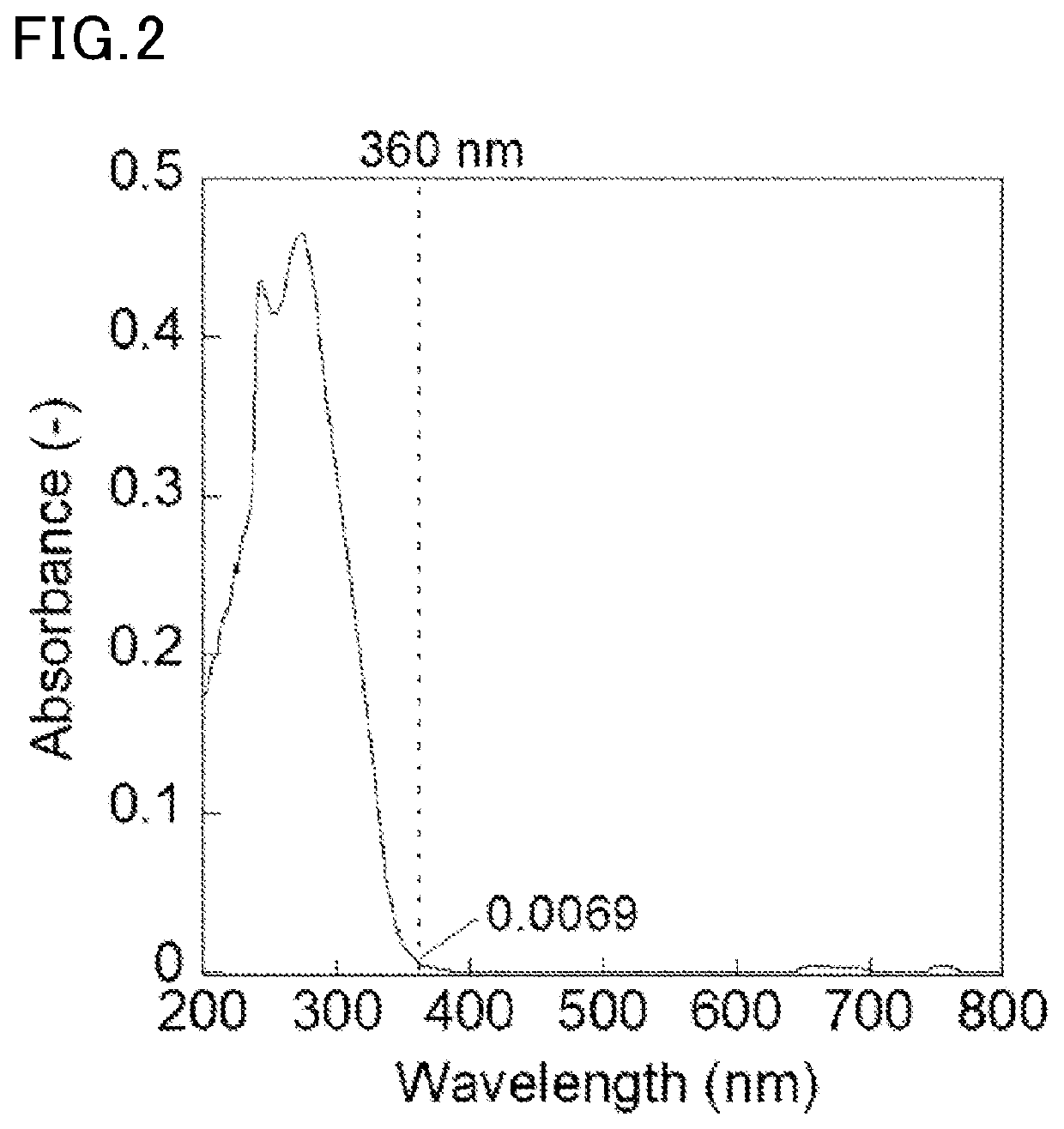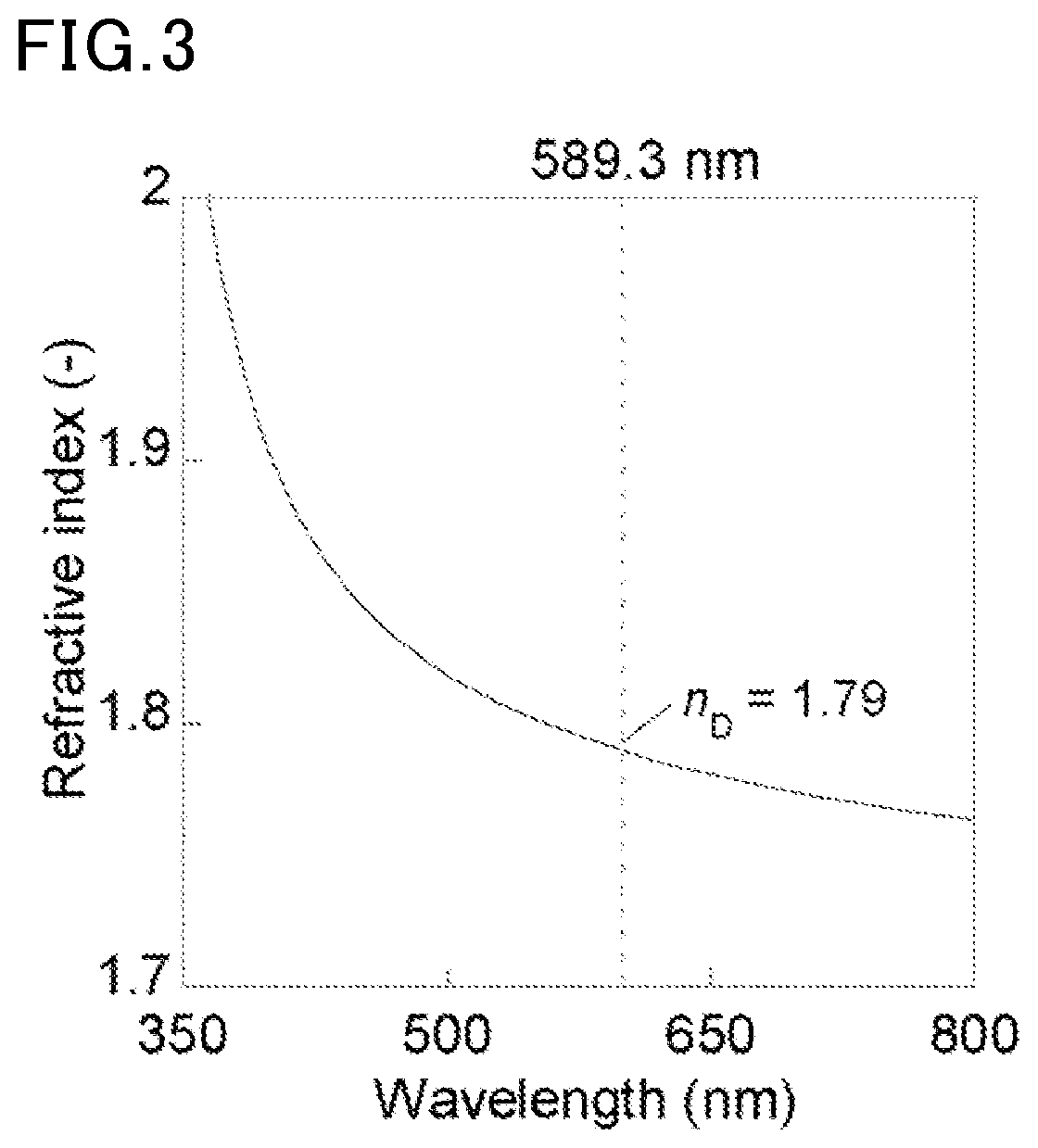Polymeric material, production method therefor, and polymeric material composition
- Summary
- Abstract
- Description
- Claims
- Application Information
AI Technical Summary
Benefits of technology
Problems solved by technology
Method used
Image
Examples
example 1
Synthesis Example 1
[0182]A 1000-ml conical beaker was charged with chloroform (300 ml), m-toluenethiol (24.8 g, 0.2 mol), and a solution of iodine (25.4 g, 0.1 mol) in methanol (300 ml), and the contents were stirred for one hour at room temperature. Then, an aqueous solution of sodium thiosulfate was added thereto, iodine was removed, and the solvent was distilled off. The reaction solution was dispersed in diethyl ether, and the dispersion was washed first with an aqueous hydrochloric acid solution (3% by mass), then with an aqueous sodium hydroxide solution (5% by mass), and finally with pure water through liquid-liquid extraction. The washed solution was dehydrated, subjected to removal of the solvent, and vacuum-dried to collect bis(3-methylphenyl)disulfide. The yield was 80%. The structure was confirmed by 1H-NMR, 13C-NMR, and FAB-MS.
Bis(3-methylphenyl)disulfide
[0183]1H-NMR (CD2Cl2, 500 MHz, ppm): δ=7.30 (s, 2H, Ph-H), 7.28 (d, 2H, Ph-H), 7.16 (t, 2H, Ph-H), 7.01 (d, 2H, Ph-H)...
example 2
[0193]The thermoplastic polymeric material A-1 (10 mg) obtained above and a zirconia nanoparticle dispersion (particle size: 11 nm, solids in a methyl ethyl ketone solution: 70%) (28.6 mg) were dissolved in 1 mL of 1,1,2,2-tetrachloroethane to obtain a thermoplastic composition (polymeric material composition).
example 3
[0202]A polymer C was synthesized in the same manner as the synthesis of the polymer A of Example 1, except that in in Example 1 only bis(3-methylphenyl)disulfide (10.92 g, 44.41 mmol) was used instead of diphenyl disulfide and bis(3-methylphenyl)disulfide and the reaction duration was set to 40 hours. The polymer C was identified by 1H-NMR and 13C-NMR. The polymer C had a weight average molecular weight Mw of 6500, a Mn of 1650, and a S—O binding energy of 162 to 164 eV. This indicated that S was 100% sulfide. The yield of the polymer C was 65%. The letter x in the formula (A) was 0.
Oxidation Reaction of Polymer Main Chain
[0203]In a 50-ml recovery flask, the polymer C (0.330 g) obtained above was added to 10 mL of a solution of m-chloroperbenzoic acid (mCPBA, 0.25 M) in chloroform, and was oxidized under stirring at room temperature for 20 hours. Then, the reaction solution was added dropwise to hydrochloric acid-acidic methanol, centrifuged, and vacuum-dried to obtain a polymer C...
PUM
| Property | Measurement | Unit |
|---|---|---|
| Glass transition temperature | aaaaa | aaaaa |
| Glass transition temperature | aaaaa | aaaaa |
| Dispersion potential | aaaaa | aaaaa |
Abstract
Description
Claims
Application Information
 Login to View More
Login to View More - R&D
- Intellectual Property
- Life Sciences
- Materials
- Tech Scout
- Unparalleled Data Quality
- Higher Quality Content
- 60% Fewer Hallucinations
Browse by: Latest US Patents, China's latest patents, Technical Efficacy Thesaurus, Application Domain, Technology Topic, Popular Technical Reports.
© 2025 PatSnap. All rights reserved.Legal|Privacy policy|Modern Slavery Act Transparency Statement|Sitemap|About US| Contact US: help@patsnap.com



